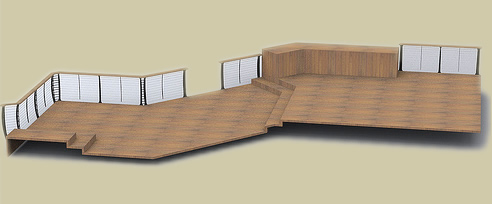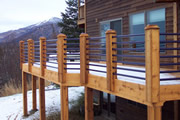Decking Railing
Constructing a house takes a lot of time and resources in the hope that after completion, it will provide the comfort and safety needed. In the construction process, the homeowner works with the contractor to make sure the building meets the expectations of the family and the laws that govern the construction industry. For instance, the building needs the decking railing as protection from falling off the deck. When young children are in the picture as future occupants of the building, it becomes tantamount to think about their safety any time they walk out of the house and stay on the deck. This does not mean that adults cannot fall off. On the contrary, anyone may miscalculate the steps and fly off the deck.
How do you choose the right decking railing?
Safety should be the priority. There is no need to go for a style that offers the aesthetic value to the structure but compromises on the safety of the occupants. This means it is important to think about the height and spacing of the decking railing. In most states, the housing department or any other body tasked with regulating the building industry sets the safety standards. The appropriate height of the rail should be around 36 inches. The spacing should not go beyond four inches between balusters and around 60 inches between posts.
Secondly, the homeowner should consider the type of structure. For instance, the metal decking railing would be appropriate for the concrete structure because it offers a good foundation for the rails. If the structure is wooden, the wood rails will work well. In addition, the homeowner should think about the environment around the structure. If it is scenic, then the rail should give an allowance for the occupants to enjoy the outlook while on the deck. These points will guide the buyer in settling for the right type.
Types of decking railing available
One of the most common types is the standard. It is easy to construct using wood strips connected to the thicker horizontal piece and screwed to the lower piece on the deck. Its durability depends on the strategy to maintain it and the finishing method used. It is cost effective for cabins and other structures that have reduced construction costs.
The other choice is the custom wood decking railing. If the homeowner wants to give the exterior of the house the same design ideas given in the interior, this is the deck rail to go for. It is possible to curve any shape or design to give the homeowner a unique customized product. Though the costs increase because of the intricate detail needed, this rail can use the more expensive and durable types of wood unlike the standard type.
Another type is the metal rail. Aluminum rails are the most popular in this category but the homeowner can also opt for wrought iron. The design or color varies and it is possible to install it with the wooden beams fixed vertically onto the deck and the metal rails fitted horizontally.
Lastly, the composite rail is preferable if the homeowner wants the rail to match with the material used on the deck. This rail seems like a vertical extension of the deck because it does not leave any seam.


